Francis Lee Smith, Jr. (October 1845 – August 25, 1916) finds his final resting place in the Presbyterian Cemetery. During his time as a VMI Cadet, he bravely fought in the Battle of New Market on May 15, 1864, where he injured his shoulder and jaw. Post Civil War, he gained prominence as a skilled lawyer in Alexandria. Notably, he successfully represented George Washington Custis Lee in a lawsuit against the United States over the confiscation of the Arlington Estate during the war.
Born as the third son of Francis Lee Smith and Sarah Gosnell Smith, he commenced his education at the Virginia Military Institute (VMI) on January 4, 1862, at the young age of 16. VMI, a distinguished military academy in Virginia, was established in 1839. Francis Lee Smith, Jr. belonged to the esteemed Class of 1867.
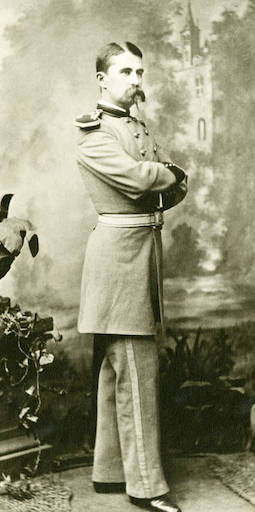
Smith’s father held a prominent position as a lawyer in Alexandria, and his clientele included notable figures such as Robert E. Lee. The family’s residence was at 510 Wolfe Street, recognized as one of the most significant homes in Alexandria.

When Union soldiers took control of Alexandria on May 24, 1861, Francis Lee Smith, Sr., his wife Sara, and their family decided to relocate to Richmond. Among them, Francis Lee Smith Jr. also moved to Richmond during that time. In Alexandria, Union General John Slough, serving as the military governor, utilized Smith’s house for his residence or work, later converting it into a hospital.
Once the war concluded in 1865, the Smith family returned to their Alexandria home. However, over the years, the family members gradually moved away, and ultimately, Maggie Smith, the youngest child, became the last inhabitant of the house until her passing in 1926.
Regrettably, Francis Lee Smith’s inability to directly pay taxes on his land south of the town along Great Hunting Creek led to the confiscation of the property in 1864. Subsequently, the land was transformed into a cemetery designated explicitly for African Americans, now recognized as The Freedmans and Contrabands Cemetery, at 1001 S. Washington Street.
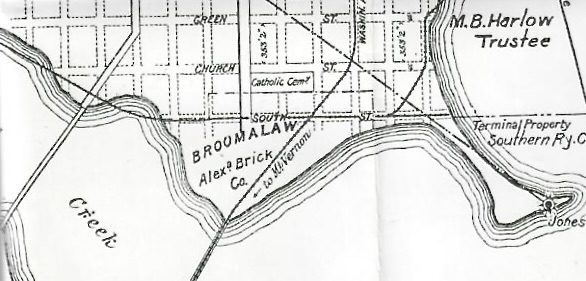
Following the conclusion of the Civil War, Smith, who had familial ties to the Lees, offered them counsel against attempting to reclaim Arlington. He made this recommendation based on his experience of being unable to regain possession of his land, which had been utilized for the Contraband Cemetery.
Read the blog [The Contrabands and Freemans Cemetery: a Historic Burial Ground for Freedmen and Fugitive Slaves in Alexandria, Va] for the rest of the story.
The Cadets at the Battle of New Market
On May 10, 1864, the VMI Cadet Corps received orders from Confederate General John C. Breckinridge to assemble in Saunton, Virginia. The 257 students were organized into a force comprising four Infantry companies and one Artillery section, with Smith assigned to Infantry Company B.
After an arduous march covering 85 miles, Breckinridge’s troops, including the cadets, encountered the Union Army of the Shenandoah, commanded by Fran Siegal, near New Market, Virginia on May 15. Breckinridge’s army numbered 4,000 soldiers, while Siegal’s force boasted over 6,000 men. Around 2:45 in the afternoon, Breckinridge called upon the cadets, his last reserves, to advance towards Bushong’s Hill and fill a crucial gap in his lines. Positioned on the hill, the Union forces unleashed a devastating barrage of cannon fire upon the Confederate ranks, inflicting substantial damage.
Amidst the forward movement, the cadets crossed a field adjacent to Bushong’s orchard, and the muddy terrain cost many of them their shoes, leading to the area being famously dubbed the “Field of Lost Shoes.” As the Confederate line drew nearer to the Union cannons, Sigel’s batteries were compelled to retreat, causing the infantry to scatter. In the aftermath, the Union soldiers abandoned five cannons, one of which was captured by the valiant VMI cadet battalion. Witnesses observed the cadets in the following manner.
“We had the pleasure to witness, in the fight, displays of courage and coolness under a severe fire which won for those who participated in the conflict immortal honor. It made our hearts leap to see the Cadets from the V. M. I. move forward in the charge upon the enemy’s battery.- Their step was as steady as the tread of veteran soldiers. They never faltered but went into “*the harvest of death” as though they had been accustomed to such bloody work. Three of these “boys” were killed in one spot by the explosion of one of the enemy’s shells The people of the Valley of Virginia owe these gallant soldiers a debt of gratitude which they can never pay.”
The Wheeling Daily Intelligencer Friday, June 3, 1864, page 2
In the midst of the fierce battle, ten cadets bravely laid down their lives, succumbing either on the battlefield or later due to the severe toll of their injuries. An additional 45 cadets sustained various wounds during the encounter. Remarkably, the youngest participant in this heroic struggle was merely fifteen years old, while the oldest stood at twenty-five.
Among the wounded was Francis Lee Smith, who exhibited remarkable resilience in adversity. He endured gunshot wounds to his chin as the bullet pierced his mouth, shattering his jawbone and exiting through his neck. Additionally, he suffered a gunshot wound to his shoulder, resulting in a fractured collarbone. Despite these grievous injuries, Smith displayed unwavering courage and determination during those trying moments.
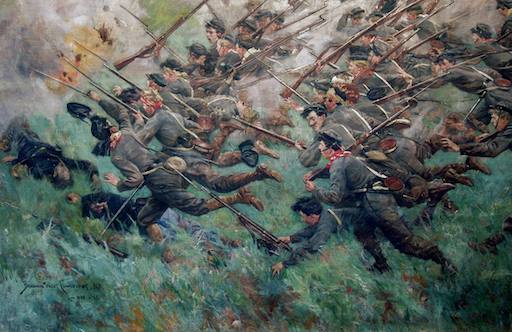
Post-War Career and Marriage.
After recuperating from the injuries he sustained at New Market, Smith persevered and successfully earned his degree. Following the conclusion of the war, he returned to Alexandria and joined his father’s esteemed law firm.
In 1871, he married Janie L. Sutherlin, and together, they were blessed with a daughter named Janie Sutherlin Smith Barrett in 1872. Tragically, Janie L. Sutherlin Smith passed away at the tender age of 22 on August 24, 1876, finding her final resting place in Danville, Virginia.
Janie Smith’s father served as a vital Quartermaster in Danville during the war. Their home provided refuge to Confederate President Jefferson Davis and his government after they fled the Confederate capital following Richmond, Virginia’s fall on April 2, 1865. Davis signed his final official proclamation as President in the Sutherlin House on April 4, 1865.
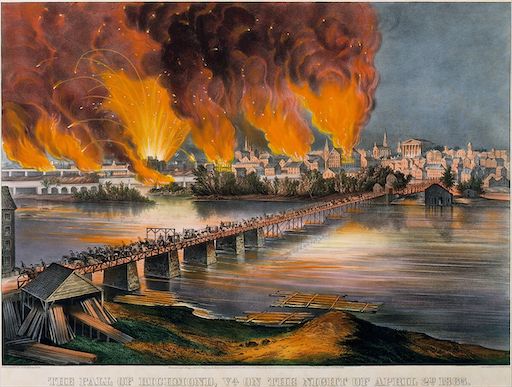
As time passed, Smith assumed ownership of his father’s law firm and began working for several prominent railroads, including the Southern, the Washington Southern, and the Pennsylvania railroads.
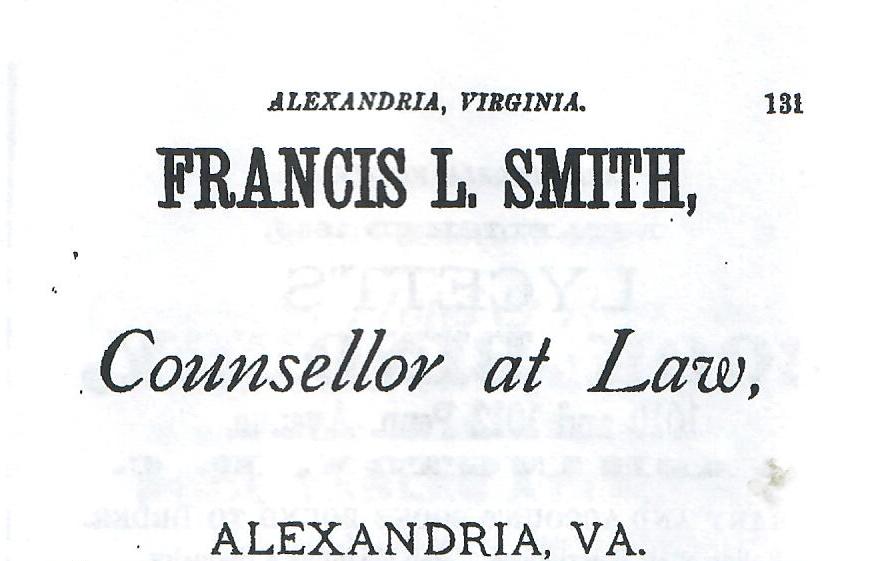
United States v. Lee
Smith disagreed with his father’s decision not to pursue legal action against the federal government for wrongfully acquiring Lee’s property. In April 1877, he took the matter to court in Alexandria, Virginia, representing George Washington Custis Lee, who had inherited his mother’s property after her passing in 1873. Smith’s efforts proved fruitful as he emerged victorious in the case. Aiding Custis on his legal team were individuals such as Legh Richmond Page, laid to rest in Richmond’s Hollywood Cemetery, Judge William Joseph Robertson, buried in Riverview Cemetery in Charlottesville, and S. Fegguston Beach, whose final resting place was in Alexandria’s Ivy Hill Cemetery. The jury’s decision was swift and compelling, as they reached their verdict on January 30, 1879, stating, “We, the Jury, find for the plaintiff, upon the issue joined, that he is entitled in fee to the whole of the premises” at Arlington.
However, the government contested this verdict and appealed to the Supreme Court, the highest judicial body in the United States, in a case known as United States v. Lee. The Supreme Court faced a deadlock initially due to the retirement of one of the judges for health reasons. Nevertheless, the Chief Justice reevaluated the case when a new judge joined the court. Ultimately, the new judge voted in favor of the Lee family, resulting in a 5-4 decision in their favor on December 4, 1882.
Consequently, on May 15, 1883, the government compensated Custis Lee with $125,000 for the property, with an additional $25,000 to be given after Lee paid the interest on the unpaid tax for the land. This transaction officially transferred ownership of Arlington to the government. Furthermore, in 1892, the family received $217,236 in compensation for the wood and timber that were taken during the war.
Smith actively represented Alexandria in the 1901-02 State Constitutional Convention, displaying his dedication to public service. Moreover, he served dutifully on the Board of Visitors for VMI until his passing. Notably, Smith held the esteemed rank of lieutenant colonel in the 3rd Regiment, First Brigade, Volunteer Infantry, a regiment established in 1881 and disbanded in 1898. This regiment comprised six companies, among them being Company F, renowned as the Alexandria Light Infantry.
Colonel Francis Lee Smith’s life of service ended on August 25, 1916, and he was laid to rest in Section 42, plot 44, within The Presbyterian Cemetery, marking the end of a remarkable journey dedicated to his community, state, and country.
| FRANCIS LEE SMITH third son of FRANCIS LEE SMITH and SARAH GOSNELL SMITH born October 6, 1845 died August 25, 1916 soldier-lawyer-Patriot Christian Numbered with thy saints in Glory everlasting |
Sources of Information
Brockett, F. L., & Rock, G. W. (1883). A Concise History of the City of Alexandria, VA, from 1669 to 1883 with a Directory of Reliable Business Houses in the City. Printed by the Gazette Book and Job Office. Alexandria, VA
Walmsley, J. E. (1919). The Last Meeting of the Confederate Cabinet. The Mississippi Valley Historical Review, 6(3), 336–349.URL [link].
Whitehorne, J. W. A. (1988). The Battle of New Market. Center for Military History, United States Army. Washington, D.C.
Pippenger, W. E. (1992). Tombstone Inscriptions of Alexandria, Virginia: Volume 1. Family Line Publications; Heritage Books, Inc.
Gaughan, A. J. (2011). The Last Battle of the Civil War: United States Versus Lee, 1861–1883. Louisiana State University Press
Hakenson, D. C. (2011). This Forgotten Land Volume II, Biographical Sketches of Confederate Veterans Buried in Alexandria, Virginia. Donald Hakenson. Alexandria, Virginia.
Dahmann, D. C. (2002). The Roster of Historic Congregational Members of the Old Presbyterian Meeting House [Unpublished raw material].
Website: The Official Site of The Virginia Military Institute (VMI). URL: [link]. Accessed: August 2023